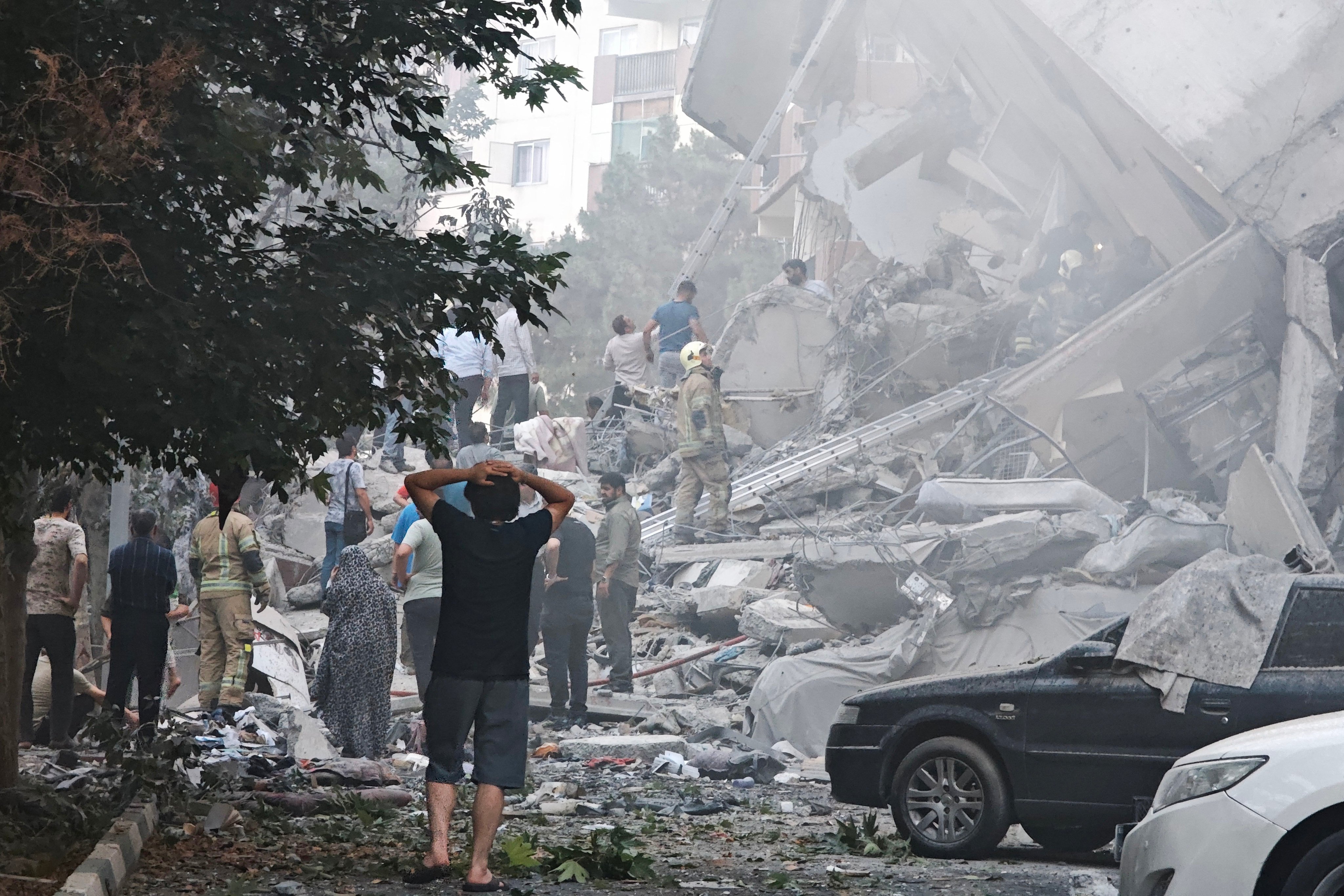Israeli strikes one more challenge for new China-Iran rail corridor
Weeks before the air strikes, a new overland trade route was launched that could help Iran evade sanctions and advance its regional ambitions

Between the US restoring “maximum pressure” on Iran to deny it a path to nuclear weapons and Israel’s air strikes, a goods train from China quietly arrived at a dry port near Tehran, making the first delivery under the new China-Iran rail corridor project. It had travelled 10,400km (6,500 miles) from the Chinese city of Xian along a trade corridor aimed at slashing delivery times to 15 days, from 30 to 40 days by sea.
This is an ambitious route, traversing Kazakhstan, Uzbekistan and Turkmenistan, and may eventually connect to Africa, the Persian Gulf littoral states and Europe. The rail corridor reflects deepening China-Iran ties amid an increasingly fractured and complex geopolitical environment.
Its launch comes as the United States reportedly mulls intercepting and inspecting Iranian oil tankers at sea to cut off its oil sales. For the US and Israel – which see Iran’s nuclear ambitions as an existential threat – Tehran’s deeper integration into Eurasian infrastructure is alarming. Critically, it would enable Iran to evade sanctions, bolster its regional influence and advance broader ambitions, including its contentious nuclear programme.
The overland route allows Iran to continue its oil and mineral exports to China and other markets. By diversifying trade routes and deepening ties with Eurasian partners, Iran boosts its economic resilience and reduces reliance on vulnerable maritime channels, including the Strait of Hormuz, a strategic strait between the Persian Gulf and the Gulf of Oman and one of the world’s most important oil transit chokepoints.
The corridor also positions Iran as a central transit hub. By integrating rail into the land and sea networks, Iran aims to connect China and Central Asia with Europe via Turkey.
The urgency for alternative trade routes has grown since late 2023, when Iranian-backed Houthi rebels from Yemen started attacking commercial ships in the Red Sea. As shippers divert their routes and shipping costs rise, Eurasian overland routes have become more attractive.
Now, however, with Israel and Iran engaged in tit-for-tat attacks, the operation of the China-Iran rail corridor faces disruptions.
At the global level, the project carries profound strategic weight. Notably, it reinforces the China-Iran axis. For Washington and its allies, the corridor could boost Iran’s bargaining power in any nuclear negotiations. By institutionalising sanctions-resistant infrastructure and cementing Iran’s role as China’s strategic partner in West Asia, the corridor highlights transport infrastructure as a tool of geopolitical resistance.
For Beijing, the corridor reflects stronger relations with Tehran. In 2016, Iran signed a Belt and Road Initiative memorandum of understanding; in 2021, the two countries signed a 25-year cooperation agreement, with Chinese investments expected to reach US$400 billion. China-Iran trade has been booming and last year reached US$13.37 billion.
The trade corridor would enable faster trade with Central Asia, West Asia and the Persian Gulf, strengthening China’s geoeconomic and geopolitical influence across these regions while advancing the Belt and Road Initiative.
Crucially, it helps mitigate China’s energy security risks and the so-called Malacca dilemma – two-thirds of China’s maritime trade and 80 per cent of its crude oil imports go through the Malacca Strait, a key chokepoint.
Transporting Iranian oil overland helps Beijing reduce this dependence while securing stable supply chains and challenging Western maritime dominance. For Beijing, this corridor is more than trade infrastructure – it is a strategic lifeline.
But there were major obstacles, even before the current hail of missiles between Iran and Israel. Chiefly, sanctions-related risks remain. The route is designed to bypass US-controlled maritime chokepoints but overland transport remains exposed to financial restrictions. Transactions involving Iran still face intense scrutiny, as shown by the US Treasury Department’s sanctions last month on Chinese companies linked to Iranian oil.
Security is another key concern. The rail corridor runs through parts of Central and West Asia prone to instability, conflict and terrorism, making it vulnerable to disruption and sabotage – from both domestic insurgents and foreign proxies. Elevated security risks and soaring insurance costs may undermine the route’s reliability and limit broader commercial use.
Technical and logistical hurdles further complicate operations. The railway has limited capacity for transporting crude oil compared to sea routes. Track gauge mismatches – China and Iran use the standard 1,435mm gauge while Central Asia uses 1,520mm – require time-consuming and expensive cargo transfers. Additional bottlenecks include uneven infrastructure, inconsistent customs protocols and poor cross-border regulatory coordination.
Recent diplomatic engagements suggest a growing political commitment to resolving these challenges. High-level meetings, including the expert consultation in Beijing last December and the gathering of national railway officials in Tehran last month, reflect efforts to address technical and logistical concerns.
Strategically, the project embeds Iran more deeply into Beijing’s Belt and Road Initiative and broader Eurasian infrastructure networks. Stronger Chinese involvement may lead to a modernisation of Iran’s railway infrastructure, further aligning Tehran with Beijing’s regional ambitions.
Regionally, the railway enhances connectivity for Central Asian states by linking them to Iranian ports and reducing reliance on routes through Russia – a traditional regional power – while reshaping trade flows. Amid intensifying Sino-Indian strategic competition across Iran, Central Asia and West Asia, the corridor also challenges Indian-backed initiatives like the International North-South Transport Corridor and the India-Middle East-Europe Economic Corridor.
The China-Iran rail corridor seeks to deepen bilateral ties, foster regional connectivity and reorient trade flows away from Western-dominated systems. Success is far from assured, especially if the fighting between Iran and Israel escalates further. Challenges of infrastructural gaps, logistical barriers and geopolitical risks – including sanctions and security threats – must be overcome.